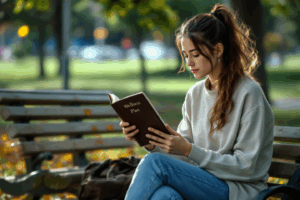
Common English Errors Blogs
"Let's Learn, Explore, and Connect to the World"

Affect vs. Effect: A Comprehensive Guide to Mastering These Tricky Terms
- Patricia Santos
- Common English Errors

Struggling with "affect" vs. "effect"? This guide clarifies the difference with examples and tips for writers, students, and professionals!
 In the vast expanse of the English language, few pairs of words cause as much befuddlement as “affect” and “effect.” Their pronunciation is strikingly similar, creating a notorious trap for both seasoned writers and novices alike. However, despite their phonetic resemblance, “affect” and “effect” serve distinct roles in sentences, carrying separate meanings and implications. The crux of mastering these terms lies not just in memorizing their definitions but in understanding their application within various contexts. This distinction is pivotal for anyone keen on refining their communication prowess. Whether drafting an academic paper, crafting a business proposal, or simply engaging in daily conversation, the correct use of “affect” and “effect” can significantly influence the clarity and impact of your message. Through this blog post, we embark on a journey to demystify these terms, providing clear definitions, vivid examples, and memorable strategies to distinguish one from the other. Aimed at students, professionals, and everyday language enthusiasts, this guide is your key to navigating one of English’s most perplexing pairs with confidence and precision.
In the vast expanse of the English language, few pairs of words cause as much befuddlement as “affect” and “effect.” Their pronunciation is strikingly similar, creating a notorious trap for both seasoned writers and novices alike. However, despite their phonetic resemblance, “affect” and “effect” serve distinct roles in sentences, carrying separate meanings and implications. The crux of mastering these terms lies not just in memorizing their definitions but in understanding their application within various contexts. This distinction is pivotal for anyone keen on refining their communication prowess. Whether drafting an academic paper, crafting a business proposal, or simply engaging in daily conversation, the correct use of “affect” and “effect” can significantly influence the clarity and impact of your message. Through this blog post, we embark on a journey to demystify these terms, providing clear definitions, vivid examples, and memorable strategies to distinguish one from the other. Aimed at students, professionals, and everyday language enthusiasts, this guide is your key to navigating one of English’s most perplexing pairs with confidence and precision.
Understanding 'Affect'
 The word “affect,” at first glance, might seem daunting due to its common confusion with “effect.” However, its usage and significance in the English language are clear and distinct once demystified. Primarily functioning as a verb, “affect” conveys the action of having an impact on or making a difference to someone or something. It’s about the influence that alters outcomes or states of being. Beyond its general application, “affect” holds a particular place in psychological contexts, where it can also emerge as a noun to describe emotions or desires that influence behavior.
The word “affect,” at first glance, might seem daunting due to its common confusion with “effect.” However, its usage and significance in the English language are clear and distinct once demystified. Primarily functioning as a verb, “affect” conveys the action of having an impact on or making a difference to someone or something. It’s about the influence that alters outcomes or states of being. Beyond its general application, “affect” holds a particular place in psychological contexts, where it can also emerge as a noun to describe emotions or desires that influence behavior.
Definition and Part of Speech
Affect (verb): To influence or make a difference in a particular situation, outcome, or in a person’s emotions or state.
In psychological terms:
Affect (noun): A feeling or emotion influenced by an individual’s experiences.
Examples in Sentences
Understanding “affect” through examples helps solidify its meaning and proper usage:

“The new government policy affected small businesses more than large corporations, creating a noticeable disparity in growth rates.” (Long-tail keyword: how to use affect in a sentence)

“Julia’s ability to remain calm under pressure positively affects her team’s performance during critical project phases.”

“The loss of their habitat severely affected the local bird population, leading to a drastic decline in their numbers.”

“His speech affected everyone in the room, leaving many with a renewed sense of purpose.”
These examples highlight “affect” in action, illustrating its role in expressing influence or change.
Common Phrases Using "Affect"
Familiarity with common phrases can further enhance understanding and application:
Affect change:
To act in a way that brings about change or influences the current state of affairs.
Affect the outcome:
To have an impact on the result of a situation or event.
Emotional affect:
Refers to the expression of emotions or feelings.
Understanding 'Affect' in Depth
 “Affect” isn’t just about influence in a superficial sense; it’s about the underlying changes that happen as a result of that influence. When saying something “affects” another, it suggests a direct or indirect alteration in characteristics, behavior, or development. Its versatility allows it to be used in a wide array of contexts, from discussing the emotional impact of an experience to analyzing the consequences of environmental changes on ecosystems. Grasping the essence of “affect” enriches one’s ability to communicate intricate nuances of influence and change. As we navigate through language, recognizing the power of “affect” as a verb and, less commonly, as a noun in psychological contexts empowers us to convey messages with greater precision and depth.
“Affect” isn’t just about influence in a superficial sense; it’s about the underlying changes that happen as a result of that influence. When saying something “affects” another, it suggests a direct or indirect alteration in characteristics, behavior, or development. Its versatility allows it to be used in a wide array of contexts, from discussing the emotional impact of an experience to analyzing the consequences of environmental changes on ecosystems. Grasping the essence of “affect” enriches one’s ability to communicate intricate nuances of influence and change. As we navigate through language, recognizing the power of “affect” as a verb and, less commonly, as a noun in psychological contexts empowers us to convey messages with greater precision and depth.
Understanding 'Effect'
 While “affect” enters the linguistic stage as a verb depicting influence, “effect” commands its presence primarily as a noun, representing the result or outcome of that influence. This distinction is pivotal, as “effect” encapsulates the consequences or changes brought about by various actions or phenomena. Its role in sentences thus complements “affect,” offering a glimpse into the aftermath of events or decisions. Recognizing “effect” and applying it accurately not only enriches one’s vocabulary but also sharpens one’s ability to analyze and communicate the impact of actions succinctly.
While “affect” enters the linguistic stage as a verb depicting influence, “effect” commands its presence primarily as a noun, representing the result or outcome of that influence. This distinction is pivotal, as “effect” encapsulates the consequences or changes brought about by various actions or phenomena. Its role in sentences thus complements “affect,” offering a glimpse into the aftermath of events or decisions. Recognizing “effect” and applying it accurately not only enriches one’s vocabulary but also sharpens one’s ability to analyze and communicate the impact of actions succinctly.
Definition and Part of Speech
Effect (noun): The result or outcome of a cause; an occurrence that follows and is caused by some previous phenomenon.
Examples in Sentences
The application of “effect” in sentences illustrates its function as a beacon of outcome and consequence:

“The effect of the prolonged drought was devastating on the local farm economy, leading to shortages and increased prices.” (Long-tail keyword: how to use effect in a sentence)

“Implementing new educational technologies had a profound effect on students’ engagement and learning outcomes.”

“The medication had an immediate effect on the patient’s recovery, significantly speeding up the healing process.”

“Environmental protection laws have had a significant effect on reducing pollution levels in urban areas.”
These instances showcase “effect” as the aftermath or result, clearly differentiating it from “affect,” which precedes it as the action leading to these outcomes.
Common Phrases Using "Effect"
To further cement understanding, here are some commonly used phrases featuring “effect”:
Take effect:
To start to produce results or become operative.
In effect:
Essentially or in operation; often used to indicate that something is the case in practice, even if not formally acknowledged.
Side effect:
An unintended consequence of an action, especially in the context of medication or procedures.
SEWA0-`A relationship where one event (the cause) makes another event happen (the effect).
Distinguishing 'Effect' in Communication
 Understanding “effect” as a noun allows for precise communication regarding outcomes and results. It’s a critical component in discussions that evaluate actions and their repercussions, whether in scientific studies, policy evaluations, or everyday life scenarios. Recognizing and correctly employing “effect” can significantly impact the clarity and effectiveness of one’s communication, enabling a deeper exploration of cause-and-effect relationships and the broader implications of actions and decisions.
Understanding “effect” as a noun allows for precise communication regarding outcomes and results. It’s a critical component in discussions that evaluate actions and their repercussions, whether in scientific studies, policy evaluations, or everyday life scenarios. Recognizing and correctly employing “effect” can significantly impact the clarity and effectiveness of one’s communication, enabling a deeper exploration of cause-and-effect relationships and the broader implications of actions and decisions.
Tricks to Remember the Difference
Navigating the linguistic labyrinth of “affect” and “effect” can be challenging, but with a few clever tricks and mnemonic devices, remembering their differences becomes simpler. This section offers practical advice to help distinguish these terms effortlessly, ensuring accurate usage in both writing and speech.
Mnemonic Devices
One of the most popular mnemonic devices to differentiate “affect” from “effect” is the acronym RAVEN: Remember, Affect is a Verb, and Effect is a Noun. This simple trick encapsulates the primary distinction between the two words, making it easier to recall their correct applications.
Another mnemonic method involves associating the initial letters of each word with their parts of speech: “A” for “affect” and “action” (verb) and “E” for “effect” and “end” or “outcome” (noun). By remembering that an action (affect) leads to an end or outcome (effect), you can quickly determine which word to use.
Practical Tips
Contextual Clues: Pay attention to the sentence structure. If you’re describing an action or influence, “affect” is likely the correct choice. If you’re discussing a result or outcome, “effect” is the way to go.
Substitution Test: Try substituting “influence” or “change” for “affect” and “result” or “outcome” for “effect.” If the sentence still makes sense, you’ve likely chosen the right word.
Remember Exceptions: Be aware of the less common uses, such as “effect” as a verb meaning to bring about something (e.g., to “effect change”) and “affect” as a noun in psychological contexts. These exceptions are rare but important to recognize.
By integrating these mnemonic devices and practical tips into your linguistic toolkit, distinguishing between “affect” and “effect” becomes a manageable task. The key is practice and patience; the more you apply these strategies, the more intuitive their usage will become. Remember, mastering the nuances of language is a journey, and every step towards clarity is progress.
Affect vs. Effect in Special Contexts
Exploring the nuanced realms of language reveals that certain words, like “affect” and “effect,” carry specialized meanings in specific contexts. These distinct applications not only underscore the complexity of English but also highlight the importance of context in determining word choice. In this section, we delve into the specialized uses of “affect” and “effect” in psychology, law, and science, shedding light on their unique implications and applications within these fields.
Psychological Context
 In psychology, “affect” frequently steps out of its usual role as a verb to become a noun, denoting an individual’s experience of feeling or emotion. Psychological “affect” is a crucial concept in understanding human behavior, as it encompasses a range of emotions from intense happiness to profound sadness. For example, a study might examine the “affect” of social media on teenagers’ self-esteem, focusing on emotional responses rather than the broader influence or outcomes.
In psychology, “affect” frequently steps out of its usual role as a verb to become a noun, denoting an individual’s experience of feeling or emotion. Psychological “affect” is a crucial concept in understanding human behavior, as it encompasses a range of emotions from intense happiness to profound sadness. For example, a study might examine the “affect” of social media on teenagers’ self-esteem, focusing on emotional responses rather than the broader influence or outcomes.
Legal and Scientific Contexts
 In legal and scientific discourse, “effect” often takes center stage, particularly when discussing the consequences or outcomes of laws, policies, or experimental conditions. Legal documents may detail the “effects” of legislation on certain populations or industries, emphasizing the results of enacting specific laws. Similarly, in scientific research, discussing the “effects” of a new drug or treatment involves analyzing the results observed during clinical trials.
In legal and scientific discourse, “effect” often takes center stage, particularly when discussing the consequences or outcomes of laws, policies, or experimental conditions. Legal documents may detail the “effects” of legislation on certain populations or industries, emphasizing the results of enacting specific laws. Similarly, in scientific research, discussing the “effects” of a new drug or treatment involves analyzing the results observed during clinical trials.
Navigating Contextual Nuances
 Understanding the context in which these words are used can greatly enhance clarity and precision in communication. For instance, legal and scientific professionals need to articulate the “effects” of their actions and findings accurately to inform, persuade, or document outcomes. In psychology, distinguishing between “affect” as an emotional response and “effect” as the outcome of interventions is critical for clear, effective communication.
Understanding the context in which these words are used can greatly enhance clarity and precision in communication. For instance, legal and scientific professionals need to articulate the “effects” of their actions and findings accurately to inform, persuade, or document outcomes. In psychology, distinguishing between “affect” as an emotional response and “effect” as the outcome of interventions is critical for clear, effective communication.
These specialized contexts for “affect” and “effect” demonstrate the richness of language and the significance of choosing the right word based on the subject matter. By appreciating these nuances, writers and speakers can convey their messages more effectively, whether discussing the emotional impact of events, the outcomes of policies, or the results of scientific experiments.
Conclusion
 Navigating the intricacies of “affect” and “effect” represents a quintessential challenge in mastering English, reflecting the language’s rich complexity and the precision required for effective communication. Through this comprehensive exploration, we’ve delved into the definitions, contexts, and nuanced distinctions that delineate these two terms, offering clarity to a commonly encountered linguistic hurdle. As we conclude, let’s encapsulate the journey of understanding, provide a recap of the pivotal points, and consider the broader implications of mastering such linguistic distinctions for effective communication.
Navigating the intricacies of “affect” and “effect” represents a quintessential challenge in mastering English, reflecting the language’s rich complexity and the precision required for effective communication. Through this comprehensive exploration, we’ve delved into the definitions, contexts, and nuanced distinctions that delineate these two terms, offering clarity to a commonly encountered linguistic hurdle. As we conclude, let’s encapsulate the journey of understanding, provide a recap of the pivotal points, and consider the broader implications of mastering such linguistic distinctions for effective communication.
Recap of Key Points
Affect (primarily a verb):
Signifies influence or change imposed upon something or someone. It embodies the action that precipitates a result or outcome, capturing the dynamic nature of interactions and impacts within varied contexts. Less commonly, it appears as a noun in psychology to describe emotions.
Effect (primarily a noun):
Embodies the result or outcome of a preceding action or influence. It stands as a testament to the consequences wrought by various causes, serving as a cornerstone for discussions ranging from casual conversations to complex scientific analyses. The verb form of “effect” implies the act of bringing about change.
The Importance of Distinction
 The ability to distinguish between “affect” and “effect” transcends mere academic exercise. It empowers individuals to convey their thoughts with precision, enhancing the clarity and impact of their message. It fosters a deeper level of understanding and engagement among audiences, regardless of the setting.
The ability to distinguish between “affect” and “effect” transcends mere academic exercise. It empowers individuals to convey their thoughts with precision, enhancing the clarity and impact of their message. It fosters a deeper level of understanding and engagement among audiences, regardless of the setting.
Beyond "Affect" and "Effect"
 This exploration serves as a microcosm of the broader linguistic adventure. English, with its rich tapestry of nuances, invites continuous learning and curiosity. Each word, with its specific contours and shades of meaning, contributes to the vibrant mosaic of communication. Embracing the challenge of linguistic precision not only refines one’s ability to express complex ideas but also enriches the overall capacity for critical thinking and nuanced understanding.
This exploration serves as a microcosm of the broader linguistic adventure. English, with its rich tapestry of nuances, invites continuous learning and curiosity. Each word, with its specific contours and shades of meaning, contributes to the vibrant mosaic of communication. Embracing the challenge of linguistic precision not only refines one’s ability to express complex ideas but also enriches the overall capacity for critical thinking and nuanced understanding.
Final Thoughts
 As we part ways with this topic, let the insights gained serve not as an endpoint but as a springboard for further exploration. The distinctions between “affect” and “effect” illuminate the path toward linguistic precision, yet the journey through the English language’s vast expanse is unending and ever-rewarding. May this exploration inspire a continued passion for discovery, a keen eye for detail, and a profound appreciation for the power of words to shape understanding, influence perspectives, and enrich human connections.
As we part ways with this topic, let the insights gained serve not as an endpoint but as a springboard for further exploration. The distinctions between “affect” and “effect” illuminate the path toward linguistic precision, yet the journey through the English language’s vast expanse is unending and ever-rewarding. May this exploration inspire a continued passion for discovery, a keen eye for detail, and a profound appreciation for the power of words to shape understanding, influence perspectives, and enrich human connections.
 In the landscape of communication, where clarity is king and precision its crown jewel, mastering the nuances of language opens doors to worlds of understanding and expression. Let us stride forward with confidence, armed with the knowledge to navigate the complexities of “affect” and “effect,” and eager to uncover the next linguistic treasure hidden within the folds of the English language.
In the landscape of communication, where clarity is king and precision its crown jewel, mastering the nuances of language opens doors to worlds of understanding and expression. Let us stride forward with confidence, armed with the knowledge to navigate the complexities of “affect” and “effect,” and eager to uncover the next linguistic treasure hidden within the folds of the English language.
References
- Oxford University Press. (n.d.). Affect. In Oxford English Dictionary. Retrieved from https://www.oed.com/view/Entry/4146
- Oxford University Press. (n.d.). Effect. In Oxford English Dictionary. Retrieved from https://www.oed.com/view/Entry/59330
- Merriam-Webster. (n.d.). Affect. In Merriam-Webster Dictionary. Retrieved from https://www.merriam-webster.com/dictionary/affect
- Merriam-Webster. (n.d.). Effect. In Merriam-Webster Dictionary. Retrieved from https://www.merriam-webster.com/dictionary/effect
- Grammarly. (n.d.). Affect vs. Effect: A Grammar Guide. Grammarly Blog. Retrieved from https://www.grammarly.com/blog/affect-vs-effect/
Latest Blogs

The Role of Nutrition in Mental Health: What the Science Says
Mental and Emotional Health “Let’s Learn, Explore, and Connect to the World” The Role of Nutrition in Mental Health: What the Science Says Introduction Lately,

Future (Be going to) 2
English Blogs “Let’s Learn, Explore, and Connect to the World” Future (Be going to) 2 II. Understanding ‘Be Going To’ The ‘be going to’ construction
Reading comprehension quiz
Check out our books and more!
English Article Collection: Understanding Business and Social Media Today
“English Article Collection: Understanding Business and Social Media Today” is your gateway to mastering this dynamic world. This meticulously curated compilation is more than just a book; it’s a journey through the realms of business awareness and social media savvy, presented in a language that speaks to beginners and experts alike.
Check out our Blogs!
Read our everyday blogs and gain new knowledge, skills, and inspiration to support your learning journey here in SEKAEL.


Explore English Blogs to improve your speaking, listening, reading, and writing skills in real-life situations.
















 Understanding your Instagram audience through these analytics goes beyond mere numbers. It’s about gaining a deep understanding of the people behind the statistics – their preferences, behaviors, and how they interact with your brand on Instagram. This knowledge is instrumental in creating a content strategy that not only reaches but resonates with your audience, driving engagement and fostering a loyal community around your brand.
Understanding your Instagram audience through these analytics goes beyond mere numbers. It’s about gaining a deep understanding of the people behind the statistics – their preferences, behaviors, and how they interact with your brand on Instagram. This knowledge is instrumental in creating a content strategy that not only reaches but resonates with your audience, driving engagement and fostering a loyal community around your brand. Measuring the success of an Instagram campaign is a nuanced process that hinges on clearly defined objectives and the strategic alignment of these goals with measurable metrics. This essential step ensures that efforts are not just cast into the digital void but are impactful and trackable, guiding future strategies and optimizations. Let’s explore how to define campaign objectives, align them with measurable metrics, and analyze performance effectively.
Measuring the success of an Instagram campaign is a nuanced process that hinges on clearly defined objectives and the strategic alignment of these goals with measurable metrics. This essential step ensures that efforts are not just cast into the digital void but are impactful and trackable, guiding future strategies and optimizations. Let’s explore how to define campaign objectives, align them with measurable metrics, and analyze performance effectively.









 Lately, the link between nutrition and mental health has garnered significant interest from researchers, medical professionals, and the general public. This burgeoning field of study explores how what we eat directly affects the way we feel, think, and behave. Traditional diets, once evaluated solely for their physical health benefits, are now being scrutinized for their impact on mental well-being. As the global burden of mental health disorders continues to rise, understanding the potential of dietary strategies to alleviate symptoms of depression, anxiety, and other mental conditions is more crucial than ever.
Lately, the link between nutrition and mental health has garnered significant interest from researchers, medical professionals, and the general public. This burgeoning field of study explores how what we eat directly affects the way we feel, think, and behave. Traditional diets, once evaluated solely for their physical health benefits, are now being scrutinized for their impact on mental well-being. As the global burden of mental health disorders continues to rise, understanding the potential of dietary strategies to alleviate symptoms of depression, anxiety, and other mental conditions is more crucial than ever. This exploration is not merely academic; it has profound practical implications for daily living. The adage “you are what you eat” extends beyond physical health, suggesting that our food choices might influence our emotional and cognitive functions. This blog aims to unpack what current science says about the role of nutrition in mental health. By delving into how different nutrients, diets, and eating patterns affect mental health, we seek to provide insights that can help individuals make informed dietary choices for both physical and mental well-being. Join us in examining the intricate connection between our diet and mental health, supported by the newest scientific findings.
This exploration is not merely academic; it has profound practical implications for daily living. The adage “you are what you eat” extends beyond physical health, suggesting that our food choices might influence our emotional and cognitive functions. This blog aims to unpack what current science says about the role of nutrition in mental health. By delving into how different nutrients, diets, and eating patterns affect mental health, we seek to provide insights that can help individuals make informed dietary choices for both physical and mental well-being. Join us in examining the intricate connection between our diet and mental health, supported by the newest scientific findings. Mental health encompasses our emotional, psychological, and social well-being. It influences how we think, feel, and behave in daily life. It influences our stress management, our relationships with others, and our decision-making processes. Mental health is essential to our ability, both collectively and individually, to process thoughts, experience emotions, engage socially, work, and appreciate life. Consequently, the advancement, safeguarding, and recovery of mental health are critical concerns for individuals, communities, and societies worldwide.
Mental health encompasses our emotional, psychological, and social well-being. It influences how we think, feel, and behave in daily life. It influences our stress management, our relationships with others, and our decision-making processes. Mental health is essential to our ability, both collectively and individually, to process thoughts, experience emotions, engage socially, work, and appreciate life. Consequently, the advancement, safeguarding, and recovery of mental health are critical concerns for individuals, communities, and societies worldwide. With conditions such as depression and anxiety on the rise globally, understanding the underlying factors that contribute to mental health is more important than ever. Depression is a primary cause of disability around the world, impacting nearly 264 million people globally. Additionally, millions suffer from anxiety disorders, such as panic disorder, obsessive-compulsive disorder (OCD), and various phobias. These disorders can significantly impair an individual’s ability to function daily and can lead to profound personal and social consequences.
With conditions such as depression and anxiety on the rise globally, understanding the underlying factors that contribute to mental health is more important than ever. Depression is a primary cause of disability around the world, impacting nearly 264 million people globally. Additionally, millions suffer from anxiety disorders, such as panic disorder, obsessive-compulsive disorder (OCD), and various phobias. These disorders can significantly impair an individual’s ability to function daily and can lead to profound personal and social consequences. In this context, the role of nutrition—often underappreciated—can be significant. It turns out what you eat isn’t just about your physical health – it can also affect your mental well-being! Recent studies show a strong connection between diet and mental health. The food you choose can influence everything from how your brain functions to how stable your emotions feel. So, just like taking care of your body through diet, making healthy food choices can be a big step towards taking care of your mind, too. By understanding the essential role that proper nutrition plays in mental health, we can better equip ourselves to maintain it in a holistic and effective manner.
In this context, the role of nutrition—often underappreciated—can be significant. It turns out what you eat isn’t just about your physical health – it can also affect your mental well-being! Recent studies show a strong connection between diet and mental health. The food you choose can influence everything from how your brain functions to how stable your emotions feel. So, just like taking care of your body through diet, making healthy food choices can be a big step towards taking care of your mind, too. By understanding the essential role that proper nutrition plays in mental health, we can better equip ourselves to maintain it in a holistic and effective manner.
 Micronutrients
Micronutrients Antioxidants
Antioxidants







 Ditch the processed stuff and fill your plate with a rainbow of goodness! Fill your plate with a rainbow of goodness! Choose fruits, veggies, whole grains, lean protein, and healthy fats to fuel your body and mind. These nutrient powerhouses provide the essential building blocks your brain needs to function at its best. Plus, they support your overall health and well-being, keeping you feeling energized and ready to take on the day.
Ditch the processed stuff and fill your plate with a rainbow of goodness! Fill your plate with a rainbow of goodness! Choose fruits, veggies, whole grains, lean protein, and healthy fats to fuel your body and mind. These nutrient powerhouses provide the essential building blocks your brain needs to function at its best. Plus, they support your overall health and well-being, keeping you feeling energized and ready to take on the day. It’s exciting to see how much science is revealing about the link between food and mood! We used to think about food just as fuel for our bodies, but research now shows it can also play a major role in our mental well-being. Choosing whole foods, omega-3s, and probiotics while limiting processed foods and sugar can significantly boost how we feel. As we learn more about the gut-brain connection and how it’s influenced by what we eat, it’s becoming clear that our dietary choices are a powerful tool for taking care of our mental health. So next time you reach for a snack, remember – you might be giving your brain a boost along with your body! Empowered with this knowledge, individuals can make informed decisions to support both their physical and mental health.
It’s exciting to see how much science is revealing about the link between food and mood! We used to think about food just as fuel for our bodies, but research now shows it can also play a major role in our mental well-being. Choosing whole foods, omega-3s, and probiotics while limiting processed foods and sugar can significantly boost how we feel. As we learn more about the gut-brain connection and how it’s influenced by what we eat, it’s becoming clear that our dietary choices are a powerful tool for taking care of our mental health. So next time you reach for a snack, remember – you might be giving your brain a boost along with your body! Empowered with this knowledge, individuals can make informed decisions to support both their physical and mental health.








 The online world has undergone significant changes in this era of digital technology. The online marketing space is rapidly changing with social media platforms emerging as powerful conduits for engaging potential customers and driving sales. Among these platforms, Instagram stands out as a prime channel for brands looking to expand their digital footprint and directly connect with their target audience. With its visually rich format and a global with more than a billion users, Instagram has transcended its original purpose as a photo-sharing app, morphing into a vibrant marketplace where businesses, from startups to established brands, can showcase their products and services through dynamic and interactive content. Instagram has also added instagram shopping.
The online world has undergone significant changes in this era of digital technology. The online marketing space is rapidly changing with social media platforms emerging as powerful conduits for engaging potential customers and driving sales. Among these platforms, Instagram stands out as a prime channel for brands looking to expand their digital footprint and directly connect with their target audience. With its visually rich format and a global with more than a billion users, Instagram has transcended its original purpose as a photo-sharing app, morphing into a vibrant marketplace where businesses, from startups to established brands, can showcase their products and services through dynamic and interactive content. Instagram has also added instagram shopping.  Central to Instagram’s emergence as a leading e-commerce platform are Shoppable Posts and Instagram Shopping; these innovative features that have revolutionized the way consumers discover and purchase products online. With Shoppable Posts, businesses can add product tags to their photos and videos, creating a seamless and intuitive shopping experience right within the Instagram interface. Meanwhile, Instagram Shopping extends this functionality by enabling brands to create a customizable digital storefront, making it easier than ever for users to browse and buy without ever leaving the app.
Central to Instagram’s emergence as a leading e-commerce platform are Shoppable Posts and Instagram Shopping; these innovative features that have revolutionized the way consumers discover and purchase products online. With Shoppable Posts, businesses can add product tags to their photos and videos, creating a seamless and intuitive shopping experience right within the Instagram interface. Meanwhile, Instagram Shopping extends this functionality by enabling brands to create a customizable digital storefront, making it easier than ever for users to browse and buy without ever leaving the app. Once just a place to share photos, Instagram has completely changed, becoming a major player in online shopping and reshaping how we buy things online.This evolution is a testament to Instagram’s commitment to innovation, responding to the changing needs of its users and the market dynamics. Today, Instagram Shopping stands at the forefront of social commerce, providing businesses with unprecedented opportunities to engage with their customers and drive sales directly from the platform.
Once just a place to share photos, Instagram has completely changed, becoming a major player in online shopping and reshaping how we buy things online.This evolution is a testament to Instagram’s commitment to innovation, responding to the changing needs of its users and the market dynamics. Today, Instagram Shopping stands at the forefront of social commerce, providing businesses with unprecedented opportunities to engage with their customers and drive sales directly from the platform. Instagram’s journey towards becoming an e-commerce powerhouse began with the introduction of business profiles in 2016, followed by the launch of shoppable posts in 2017. These pivotal updates opened new avenues for brands to interact with their audience, transforming passive scrolling into active shopping experiences. By enabling users to purchase products directly through posts and stories, by seamlessly blending social connection with shopping features, Instagram has fostered a unique space where cohesive ecosystem where discovery and purchase go hand in hand.
Instagram’s journey towards becoming an e-commerce powerhouse began with the introduction of business profiles in 2016, followed by the launch of shoppable posts in 2017. These pivotal updates opened new avenues for brands to interact with their audience, transforming passive scrolling into active shopping experiences. By enabling users to purchase products directly through posts and stories, by seamlessly blending social connection with shopping features, Instagram has fostered a unique space where cohesive ecosystem where discovery and purchase go hand in hand. The impact of Instagram Shopping on consumer behavior is significant, with statistics revealing a growing preference for shopping within social media platforms. According to Instagram, 70% of shopping enthusiasts turn to the platform for product discovery, and 130 million users tap on shopping posts monthly to learn more about products. This trend underscores the platform’s role in influencing shopping decisions and highlights the importance of an optimized Instagram presence for businesses aiming to capture this engaged audience.
The impact of Instagram Shopping on consumer behavior is significant, with statistics revealing a growing preference for shopping within social media platforms. According to Instagram, 70% of shopping enthusiasts turn to the platform for product discovery, and 130 million users tap on shopping posts monthly to learn more about products. This trend underscores the platform’s role in influencing shopping decisions and highlights the importance of an optimized Instagram presence for businesses aiming to capture this engaged audience.
 In the digital marketplace, the ability to capture consumer interest at the moment of discovery is crucial. Instagram’s introduction of Shoppable Posts has revolutionized the path from product discovery to purchase, making it a seamless journey that keeps users engaged within the platform. This innovative feature is at the heart of Instagram’s shopping capabilities, offering a direct, intuitive, and visually appealing shopping experience that benefits both businesses and consumers.
In the digital marketplace, the ability to capture consumer interest at the moment of discovery is crucial. Instagram’s introduction of Shoppable Posts has revolutionized the path from product discovery to purchase, making it a seamless journey that keeps users engaged within the platform. This innovative feature is at the heart of Instagram’s shopping capabilities, offering a direct, intuitive, and visually appealing shopping experience that benefits both businesses and consumers. Shoppable Posts are Instagram posts that businesses can tag with products from their catalog. These tags appear on both posts and stories, allowing users to tap on a product to see more details, such as pricing and product descriptions, without ever leaving the Instagram app. A further tap takes the user directly to the business’s website or to Instagram Checkout (where available), where they can complete their purchase.
Shoppable Posts are Instagram posts that businesses can tag with products from their catalog. These tags appear on both posts and stories, allowing users to tap on a product to see more details, such as pricing and product descriptions, without ever leaving the Instagram app. A further tap takes the user directly to the business’s website or to Instagram Checkout (where available), where they can complete their purchase. Shoppable Posts have significantly altered the shopping experience on Instagram, making it a fluid journey from discovery to purchase. Users scrolling through their feeds or exploring hashtags can stumble upon products organically, marked by the distinctive shopping bag icon. This discovery process feels natural and integrated within the user’s social media experience, rather than an intrusive or disruptive ad.
Shoppable Posts have significantly altered the shopping experience on Instagram, making it a fluid journey from discovery to purchase. Users scrolling through their feeds or exploring hashtags can stumble upon products organically, marked by the distinctive shopping bag icon. This discovery process feels natural and integrated within the user’s social media experience, rather than an intrusive or disruptive ad.

 Instagram Shop:
Instagram Shop:  Product Tags:
Product Tags: Collections:
Collections:  Shopping in Explore:
Shopping in Explore: 
 Instagram provides valuable analytics tools for businesses to track the performance of their shopping features. These insights can help you understand which products and content types are most effective, allowing for data-driven decisions to optimize your strategy.
Instagram provides valuable analytics tools for businesses to track the performance of their shopping features. These insights can help you understand which products and content types are most effective, allowing for data-driven decisions to optimize your strategy.
 The most engaging shoppable content does more than showcase a product; it tells a story. This narrative approach can significantly enhance the appeal of your offerings, making them more relatable and desirable to your audience. For instance, a lifestyle brand might use a series of posts to depict a day in the life of a person using their products, highlighting features and benefits in a natural, story-driven context. Videos, with their dynamic nature, are particularly effective for storytelling, allowing you to convey the personality and values behind your brand, alongside the practical aspects of your products.
The most engaging shoppable content does more than showcase a product; it tells a story. This narrative approach can significantly enhance the appeal of your offerings, making them more relatable and desirable to your audience. For instance, a lifestyle brand might use a series of posts to depict a day in the life of a person using their products, highlighting features and benefits in a natural, story-driven context. Videos, with their dynamic nature, are particularly effective for storytelling, allowing you to convey the personality and values behind your brand, alongside the practical aspects of your products.

 Implementing these creative strategies requires a keen understanding of your target customers or audience and a willingness to experiment with different content formats and engagement techniques. The goal is to create a rich, interactive shopping experience that goes beyond the transactional, fostering a strong connection between your brand and your customers.
Implementing these creative strategies requires a keen understanding of your target customers or audience and a willingness to experiment with different content formats and engagement techniques. The goal is to create a rich, interactive shopping experience that goes beyond the transactional, fostering a strong connection between your brand and your customers. Examples of businesses thriving with Instagram Shopping show how powerful it can be for increasing sales. These case studies not only showcase the potential of Instagram as a sales channel but also offer valuable insights and strategies that can inspire others.
Examples of businesses thriving with Instagram Shopping show how powerful it can be for increasing sales. These case studies not only showcase the potential of Instagram as a sales channel but also offer valuable insights and strategies that can inspire others. One notable success story is that of
One notable success story is that of 
 Get ready for Instagram Shopping to take off! The future holds even more ways to shop that feel like they’re built just for you, driven by advancements in AI, AR, and machine learning technologies. Upcoming features are expected to include enhanced AR try-on capabilities, allowing users to visualize products more realistically, and personalized shopping recommendations powered by AI, tailoring product discoveries to individual preferences.
Get ready for Instagram Shopping to take off! The future holds even more ways to shop that feel like they’re built just for you, driven by advancements in AI, AR, and machine learning technologies. Upcoming features are expected to include enhanced AR try-on capabilities, allowing users to visualize products more realistically, and personalized shopping recommendations powered by AI, tailoring product discoveries to individual preferences. Businesses can prepare for this future by investing in high-quality visual content and exploring AR capabilities for their products. Staying abreast of platform updates and adapting strategies to leverage new features will be crucial. Additionally, cultivating a strong community around your brand will enhance customer loyalty and engagement, positioning your business to capitalize on the evolving landscape of social e-commerce.
Businesses can prepare for this future by investing in high-quality visual content and exploring AR capabilities for their products. Staying abreast of platform updates and adapting strategies to leverage new features will be crucial. Additionally, cultivating a strong community around your brand will enhance customer loyalty and engagement, positioning your business to capitalize on the evolving landscape of social e-commerce.





 Despite its significant impact, many people are unaware of the condition’s complexity and the seriousness with which it should be treated. SAD goes beyond feeling down during colder, darker days; it encompasses a range of symptoms that can affect every aspect of one’s life, from sleep patterns to social interactions. As we delve into the nuances of Seasonal Affective Disorder, this blog aims to shed light on its symptoms, potential causes, and the various treatment options available, offering hope and guidance for those affected by this seasonal depression. Understanding SAD is the first step toward effective management and coping strategies, ensuring those affected can navigate their symptoms with knowledge and support.
Despite its significant impact, many people are unaware of the condition’s complexity and the seriousness with which it should be treated. SAD goes beyond feeling down during colder, darker days; it encompasses a range of symptoms that can affect every aspect of one’s life, from sleep patterns to social interactions. As we delve into the nuances of Seasonal Affective Disorder, this blog aims to shed light on its symptoms, potential causes, and the various treatment options available, offering hope and guidance for those affected by this seasonal depression. Understanding SAD is the first step toward effective management and coping strategies, ensuring those affected can navigate their symptoms with knowledge and support. Seasonal Affective Disorder (SAD) is a family of depression that manifests during a particular season, typically in autumn and winter, when daylight hours shorten and exposure to sunlight decreases. However, a less common form of SAD occurs during the spring and summer months, demonstrating that this condition can impact individuals differently based on the season. Unlike the mild winter blues that many people experience with the change of seasons, SAD involves significant mood changes and symptoms that can affect a person’s daily functioning.
Seasonal Affective Disorder (SAD) is a family of depression that manifests during a particular season, typically in autumn and winter, when daylight hours shorten and exposure to sunlight decreases. However, a less common form of SAD occurs during the spring and summer months, demonstrating that this condition can impact individuals differently based on the season. Unlike the mild winter blues that many people experience with the change of seasons, SAD involves significant mood changes and symptoms that can affect a person’s daily functioning. The prevalence of SAD varies by geography and age, with individuals living farther from the equator and younger adults being more susceptible. Women are also diagnosed with SAD at a higher rate than men. This condition highlights the complex interplay between our environment, biological rhythms, and mental health, underscoring the need for a deeper understanding and awareness of SAD.
The prevalence of SAD varies by geography and age, with individuals living farther from the equator and younger adults being more susceptible. Women are also diagnosed with SAD at a higher rate than men. This condition highlights the complex interplay between our environment, biological rhythms, and mental health, underscoring the need for a deeper understanding and awareness of SAD. Distinguishing SAD from the winter blues is crucial for proper diagnosis and treatment. Winter blues might bring on mild feelings of downness or low energy during cold weather. However, SAD is a different story altogether. It’s characterized by much more severe symptoms like deep sadness, significant changes in sleep and appetite, and a loss of interest in things you used to enjoy. These symptoms can be incredibly disruptive, making it difficult to function normally in your daily work, school, or relationships. This highlights the importance of recognizing SAD and taking steps to address it with the seriousness it deserves. As we continue to explore the symptoms, causes, and treatment options for SAD, it becomes evident that this condition is more than just a seasonal funk—it’s a significant mental health issue that requires attention and care.
Distinguishing SAD from the winter blues is crucial for proper diagnosis and treatment. Winter blues might bring on mild feelings of downness or low energy during cold weather. However, SAD is a different story altogether. It’s characterized by much more severe symptoms like deep sadness, significant changes in sleep and appetite, and a loss of interest in things you used to enjoy. These symptoms can be incredibly disruptive, making it difficult to function normally in your daily work, school, or relationships. This highlights the importance of recognizing SAD and taking steps to address it with the seriousness it deserves. As we continue to explore the symptoms, causes, and treatment options for SAD, it becomes evident that this condition is more than just a seasonal funk—it’s a significant mental health issue that requires attention and care. Seasonal Affective Disorder manifests through a variety of symptoms, which can vary significantly depending on whether the individual is experiencing winter-pattern or summer-pattern SAD. Understanding these symptoms is crucial for recognizing the condition and seeking appropriate treatment.
Seasonal Affective Disorder manifests through a variety of symptoms, which can vary significantly depending on whether the individual is experiencing winter-pattern or summer-pattern SAD. Understanding these symptoms is crucial for recognizing the condition and seeking appropriate treatment. Unfortunately, these symptoms aren’t just inconvenient. They can have a major impact on your quality of life. This can influence your relationships with friends and family, make it hard to focus at work or school, and leave you feeling drained overall. It’s important to note that while some symptoms are common to other forms of depression, the seasonal recurrence of these symptoms is a key indicator of SAD. This cyclical pattern not only aids in diagnosing the disorder but also emphasizes the profound effect seasonal changes can have on our mental health. Recognizing these symptoms as part of a recurring pattern is the first step toward seeking help and finding effective treatment options to manage SAD.
Unfortunately, these symptoms aren’t just inconvenient. They can have a major impact on your quality of life. This can influence your relationships with friends and family, make it hard to focus at work or school, and leave you feeling drained overall. It’s important to note that while some symptoms are common to other forms of depression, the seasonal recurrence of these symptoms is a key indicator of SAD. This cyclical pattern not only aids in diagnosing the disorder but also emphasizes the profound effect seasonal changes can have on our mental health. Recognizing these symptoms as part of a recurring pattern is the first step toward seeking help and finding effective treatment options to manage SAD.





 Diagnosing Seasonal Affective Disorder (SAD) involves a comprehensive assessment by a mental health professional. Given its symptomatic overlap with other forms of depression, distinguishing SAD from general depression or other mental health conditions is crucial. The diagnostic process typically includes a thorough evaluation of the individual’s medical history, a physical exam, and detailed discussions about the nature and timing of the symptoms.
Diagnosing Seasonal Affective Disorder (SAD) involves a comprehensive assessment by a mental health professional. Given its symptomatic overlap with other forms of depression, distinguishing SAD from general depression or other mental health conditions is crucial. The diagnostic process typically includes a thorough evaluation of the individual’s medical history, a physical exam, and detailed discussions about the nature and timing of the symptoms. The cyclical nature of SAD can complicate its diagnosis. Patients might not immediately recognize the seasonal pattern of their symptoms or may not seek help during active episodes. Furthermore, other conditions like thyroid disorders can mimic the symptoms of depression, necessitating a careful exclusion of medical causes.
The cyclical nature of SAD can complicate its diagnosis. Patients might not immediately recognize the seasonal pattern of their symptoms or may not seek help during active episodes. Furthermore, other conditions like thyroid disorders can mimic the symptoms of depression, necessitating a careful exclusion of medical causes. While self-assessment tools and questionnaires can be helpful in identifying potential cases of SAD, they cannot replace professional diagnosis. These tools can, however, provide valuable insights that individuals can bring to their healthcare provider to facilitate the diagnostic process.
While self-assessment tools and questionnaires can be helpful in identifying potential cases of SAD, they cannot replace professional diagnosis. These tools can, however, provide valuable insights that individuals can bring to their healthcare provider to facilitate the diagnostic process.




 Create a Support System:
Create a Support System: Establish a Routine:
Establish a Routine: Stay Active: Don’t underestimate the power of exercise! It’s a fantastic tool to combat SAD. Even low-impact activities like yoga or walking can be incredibly beneficial. They act like natural mood boosters, increasing your energy and overall well-being. So next time you’re feeling the winter blues, lace up your shoes or grab your yoga mat – it might be just the pick-me-up you need. Whenever possible, outdoor exercise during daylight hours can double the benefits of combining physical activity with sunlight exposure.
Stay Active: Don’t underestimate the power of exercise! It’s a fantastic tool to combat SAD. Even low-impact activities like yoga or walking can be incredibly beneficial. They act like natural mood boosters, increasing your energy and overall well-being. So next time you’re feeling the winter blues, lace up your shoes or grab your yoga mat – it might be just the pick-me-up you need. Whenever possible, outdoor exercise during daylight hours can double the benefits of combining physical activity with sunlight exposure. Seek Professional Help Early:
Seek Professional Help Early: Understanding Seasonal Affective Disorder (SAD) is essential for those affected and their loved ones. By recognizing its symptoms and underlying causes and exploring available treatments, individuals can navigate this condition more effectively. Treatments like light therapy, medication, and cognitive behavioral therapy, along with lifestyle adjustments, offer a beacon of hope for managing SAD. If you’re struggling with seasonal depression, there’s hope! By building a strong support system with friends, family, or even a support group, you can create a positive environment that makes a big difference. Don’t wait to reach out for help! Talking to a professional can be very transformational. They can equip you with everything you might need to effectively manage your SAD symptoms. This will empower you to take control and feel better, even during challenging seasons. Remember, taking these steps can significantly improve your quality of life, even during those tough seasonal dips. Awareness and proactive management are key, enabling individuals to not just endure the changing seasons but thrive throughout the year.
Understanding Seasonal Affective Disorder (SAD) is essential for those affected and their loved ones. By recognizing its symptoms and underlying causes and exploring available treatments, individuals can navigate this condition more effectively. Treatments like light therapy, medication, and cognitive behavioral therapy, along with lifestyle adjustments, offer a beacon of hope for managing SAD. If you’re struggling with seasonal depression, there’s hope! By building a strong support system with friends, family, or even a support group, you can create a positive environment that makes a big difference. Don’t wait to reach out for help! Talking to a professional can be very transformational. They can equip you with everything you might need to effectively manage your SAD symptoms. This will empower you to take control and feel better, even during challenging seasons. Remember, taking these steps can significantly improve your quality of life, even during those tough seasonal dips. Awareness and proactive management are key, enabling individuals to not just endure the changing seasons but thrive throughout the year.





 This post examines the complex correlation between mental health and social media use, providing knowledge, research discoveries, and useful tips for managing the online world without impacting mental wellness. By unraveling the various aspects of this subject, we strive to uncover the ways in which social media impacts our mental state and how we can develop a better relationship with these channels, promoting better overall mental health. Understanding this link is crucial, not only for individual users but for society as a whole, as we move forward in an increasingly connected world.
This post examines the complex correlation between mental health and social media use, providing knowledge, research discoveries, and useful tips for managing the online world without impacting mental wellness. By unraveling the various aspects of this subject, we strive to uncover the ways in which social media impacts our mental state and how we can develop a better relationship with these channels, promoting better overall mental health. Understanding this link is crucial, not only for individual users but for society as a whole, as we move forward in an increasingly connected world. The journey of social media from its nascent stages to becoming a global phenomenon is nothing short of remarkable. The evolution began in the late 1990s and early 2000s with sites like Six Degrees and Friendster, which laid the groundwork for the social networking revolution. These platforms introduced the concept of creating personal profiles and connecting with friends online, setting the stage for future innovations in digital socialization. The subsequent launch of Facebook in 2004 marked a pivotal moment, transforming social media into a ubiquitous presence in our lives. Today, with the advent of platforms like Instagram, Twitter, and TikTok, social media has diversified, catering to varied interests and forms of expression.
The journey of social media from its nascent stages to becoming a global phenomenon is nothing short of remarkable. The evolution began in the late 1990s and early 2000s with sites like Six Degrees and Friendster, which laid the groundwork for the social networking revolution. These platforms introduced the concept of creating personal profiles and connecting with friends online, setting the stage for future innovations in digital socialization. The subsequent launch of Facebook in 2004 marked a pivotal moment, transforming social media into a ubiquitous presence in our lives. Today, with the advent of platforms like Instagram, Twitter, and TikTok, social media has diversified, catering to varied interests and forms of expression. Current statistics highlight the staggering extent of social media’s reach, with over 4.5 billion people around the world actively using these platforms. This represents more than half of the global population, a testament to social media’s integral role in modern communication. These platforms have not only reshaped how we connect with others but have also become vital tools for business, activism, and entertainment. They offer unprecedented opportunities for individuals to share their lives, opinions, and talents with a global audience, fostering communities and movements that transcend geographical boundaries.
Current statistics highlight the staggering extent of social media’s reach, with over 4.5 billion people around the world actively using these platforms. This represents more than half of the global population, a testament to social media’s integral role in modern communication. These platforms have not only reshaped how we connect with others but have also become vital tools for business, activism, and entertainment. They offer unprecedented opportunities for individuals to share their lives, opinions, and talents with a global audience, fostering communities and movements that transcend geographical boundaries. The way we communicate and our perception of ourselves and the world around us have been greatly impacted by the escalation of social media. Society has been transformed by this phenomenon. Its impact is multifaceted, serving as a tool for empowerment and connection while also posing challenges and questions about privacy, authenticity, and mental well-being. As we delve deeper into the relationship between social media and mental health, it’s essential to consider this historical context and the profound influence these platforms wield in our daily lives.
The way we communicate and our perception of ourselves and the world around us have been greatly impacted by the escalation of social media. Society has been transformed by this phenomenon. Its impact is multifaceted, serving as a tool for empowerment and connection while also posing challenges and questions about privacy, authenticity, and mental well-being. As we delve deeper into the relationship between social media and mental health, it’s essential to consider this historical context and the profound influence these platforms wield in our daily lives.
 An individual’s mood, thought processes, and daily functioning can be influenced by common mental health issues such as anxiety, depression, bipolar disorder, and post-traumatic stress disorder (PTSD). Each of these disorders has its own set of symptoms. Anxiety and depression, for example, can lead to persistent feelings of worry or sadness, affecting an individual’s ability to work, study, eat, sleep, and enjoy life. Despite the prevalence of these conditions—millions worldwide suffer from mental health issues—they often go unrecognized or untreated due to lack of awareness, access to care, or the stigma attached to admitting one struggles with mental health.
An individual’s mood, thought processes, and daily functioning can be influenced by common mental health issues such as anxiety, depression, bipolar disorder, and post-traumatic stress disorder (PTSD). Each of these disorders has its own set of symptoms. Anxiety and depression, for example, can lead to persistent feelings of worry or sadness, affecting an individual’s ability to work, study, eat, sleep, and enjoy life. Despite the prevalence of these conditions—millions worldwide suffer from mental health issues—they often go unrecognized or untreated due to lack of awareness, access to care, or the stigma attached to admitting one struggles with mental health. In recent years, there has been a growing movement to destigmatize mental health issues, with public figures, organizations, and individuals advocating for open discussions, increased funding for mental health services, and greater access to care. Social media, while a double-edged sword, has played a significant role in this shift, offering platforms where people can share their experiences, find community, and access information and support. Understanding the fundamental aspects of mental health is the first step in exploring its complex relationship with social media, highlighting the need for a balanced approach to digital consumption for the sake of our psychological well-being.
In recent years, there has been a growing movement to destigmatize mental health issues, with public figures, organizations, and individuals advocating for open discussions, increased funding for mental health services, and greater access to care. Social media, while a double-edged sword, has played a significant role in this shift, offering platforms where people can share their experiences, find community, and access information and support. Understanding the fundamental aspects of mental health is the first step in exploring its complex relationship with social media, highlighting the need for a balanced approach to digital consumption for the sake of our psychological well-being. The relationship between mental health and social media is a complex issue, where studies shed light on the diverse effects these networks have on our psychological state, highlighting both beneficial and detrimental outcomes. On the positive side, social media offers unparalleled opportunities for connectivity, allowing individuals to maintain relationships across distances, find communities of support, and access a wealth of informational resources. For many, these platforms are a space for self-expression and identity exploration, offering a sense of belonging and validation. Awareness campaigns and support communities on social media platforms have been pivotal in reducing the stigma around mental health, offering people the knowledge and motivation necessary to pursue assistance.
The relationship between mental health and social media is a complex issue, where studies shed light on the diverse effects these networks have on our psychological state, highlighting both beneficial and detrimental outcomes. On the positive side, social media offers unparalleled opportunities for connectivity, allowing individuals to maintain relationships across distances, find communities of support, and access a wealth of informational resources. For many, these platforms are a space for self-expression and identity exploration, offering a sense of belonging and validation. Awareness campaigns and support communities on social media platforms have been pivotal in reducing the stigma around mental health, offering people the knowledge and motivation necessary to pursue assistance. Yet, the link between social media and mental health isn’t entirely positive. An increasing amount of studies highlight the negative consequences of too much social media use, such as heightened levels of stress, depression, and isolation. A major issue is the culture of comparison driven by sites like Instagram and Facebook, where viewing others’ curated life highlights can provoke feelings of insufficiency and low self-worth in viewers. The obligation to maintain an impeccable online persona can also lead to anxiety and stress, especially in teenagers and young adults who are more vulnerable to social approval.
Yet, the link between social media and mental health isn’t entirely positive. An increasing amount of studies highlight the negative consequences of too much social media use, such as heightened levels of stress, depression, and isolation. A major issue is the culture of comparison driven by sites like Instagram and Facebook, where viewing others’ curated life highlights can provoke feelings of insufficiency and low self-worth in viewers. The obligation to maintain an impeccable online persona can also lead to anxiety and stress, especially in teenagers and young adults who are more vulnerable to social approval. Another point of concern is how social media affects sleep. Screen-emitted blue light can interfere with regular sleep patterns, and the compelling draw of these platforms frequently leads to prolonged use before bedtime, exacerbating sleep quality issues. Inadequate sleep quality is acknowledged as a factor in numerous mental health conditions, such as depression and anxiety.
Another point of concern is how social media affects sleep. Screen-emitted blue light can interfere with regular sleep patterns, and the compelling draw of these platforms frequently leads to prolonged use before bedtime, exacerbating sleep quality issues. Inadequate sleep quality is acknowledged as a factor in numerous mental health conditions, such as depression and anxiety. The algorithms powering social media platforms are designed to capture and retain user attention, often with profound effects on our emotions and behaviors. These algorithms analyze user interactions, preferences, and activity patterns to curate and present content they predict will be most engaging. While this can enhance user experience by tailoring content to individual interests, it also raises concerns about the psychological impact of such personalized feeds.
The algorithms powering social media platforms are designed to capture and retain user attention, often with profound effects on our emotions and behaviors. These algorithms analyze user interactions, preferences, and activity patterns to curate and present content they predict will be most engaging. While this can enhance user experience by tailoring content to individual interests, it also raises concerns about the psychological impact of such personalized feeds. The addictive nature of social media is another consequence of algorithmic design. Features like infinite scrolling and notification badges exploit human psychological vulnerabilities, encouraging continuous platform use. This can lead to excessive screen time, disrupting real-life interactions, physical activity, and sleep—all critical components of mental health. The dopamine-driven feedback loops associated with likes, comments, and shares can also mimic the effects of addictive substances, making it difficult for users to disengage.
The addictive nature of social media is another consequence of algorithmic design. Features like infinite scrolling and notification badges exploit human psychological vulnerabilities, encouraging continuous platform use. This can lead to excessive screen time, disrupting real-life interactions, physical activity, and sleep—all critical components of mental health. The dopamine-driven feedback loops associated with likes, comments, and shares can also mimic the effects of addictive substances, making it difficult for users to disengage. Furthermore, algorithms can inadvertently promote harmful content, including disinformation, extreme dieting practices, or self-harm, which can have dire consequences for vulnerable users. Although platforms are increasingly implementing measures to mitigate these risks, the challenge of balancing user engagement with mental health considerations remains significant.
Furthermore, algorithms can inadvertently promote harmful content, including disinformation, extreme dieting practices, or self-harm, which can have dire consequences for vulnerable users. Although platforms are increasingly implementing measures to mitigate these risks, the challenge of balancing user engagement with mental health considerations remains significant. As we navigate the complexities of the digital age, the link between social media and mental health emerges as a critical area of concern and study. Our exploration reveals a nuanced landscape where the benefits of connectivity and community coexist with challenges such as anxiety, depression, and disrupted self-esteem. Acknowledging the two-sided character of social media is the initial move in cultivating a more positive engagement with these networks.
As we navigate the complexities of the digital age, the link between social media and mental health emerges as a critical area of concern and study. Our exploration reveals a nuanced landscape where the benefits of connectivity and community coexist with challenges such as anxiety, depression, and disrupted self-esteem. Acknowledging the two-sided character of social media is the initial move in cultivating a more positive engagement with these networks. In closing, the conversation about social media and mental health is ongoing, reflecting broader societal shifts toward recognizing and valuing mental wellness. By approaching social media with intentionality and mindfulness, we can harness its potential for good, making our digital lives a source of support, inspiration, and connection. As we move forward, let us remain committed to balancing our online and offline lives, ensuring that our engagement with social media enriches rather than detracts from our overall well-being.
In closing, the conversation about social media and mental health is ongoing, reflecting broader societal shifts toward recognizing and valuing mental wellness. By approaching social media with intentionality and mindfulness, we can harness its potential for good, making our digital lives a source of support, inspiration, and connection. As we move forward, let us remain committed to balancing our online and offline lives, ensuring that our engagement with social media enriches rather than detracts from our overall well-being.





 Moreover, the role of effective communication extends beyond the individual, influencing the broader professional setting. It is the foundation upon which relationships are built and maintained. In business environments, where time is a valuable commodity, the ability to communicate efficiently and clearly directly impacts productivity and operational success. Emails that are concise, well-structured, and free from errors are more likely to be read and responded to promptly, facilitating smoother workflows and quicker decision-making processes.
Moreover, the role of effective communication extends beyond the individual, influencing the broader professional setting. It is the foundation upon which relationships are built and maintained. In business environments, where time is a valuable commodity, the ability to communicate efficiently and clearly directly impacts productivity and operational success. Emails that are concise, well-structured, and free from errors are more likely to be read and responded to promptly, facilitating smoother workflows and quicker decision-making processes. In the realm of business communication, emails are a primary tool for exchanging information, proposals, updates, and even casual professional greetings. To harness the full potential of this tool, it is imperative to grasp and apply three fundamental principles: clarity and conciseness, tone and formality, and audience awareness. These principles are not just guidelines but the backbone of effective email writing, ensuring that the message not only reaches the recipient but also achieves its intended effect.
In the realm of business communication, emails are a primary tool for exchanging information, proposals, updates, and even casual professional greetings. To harness the full potential of this tool, it is imperative to grasp and apply three fundamental principles: clarity and conciseness, tone and formality, and audience awareness. These principles are not just guidelines but the backbone of effective email writing, ensuring that the message not only reaches the recipient but also achieves its intended effect. The cornerstone of any effective business email is its ability to convey a message clearly and concisely. In a business setting, time is of the essence. Recipients often skim through emails, looking for pertinent information. Therefore, getting to the point quickly without sacrificing clarity is crucial. This requires a disciplined approach to writing, focusing on straightforward language and avoiding unnecessary jargon or verbosity. Clarity is further enhanced by structuring the email logically, with a clear introduction, body, and conclusion, ensuring the recipient can easily follow the message’s progression and grasp its essence promptly.
The cornerstone of any effective business email is its ability to convey a message clearly and concisely. In a business setting, time is of the essence. Recipients often skim through emails, looking for pertinent information. Therefore, getting to the point quickly without sacrificing clarity is crucial. This requires a disciplined approach to writing, focusing on straightforward language and avoiding unnecessary jargon or verbosity. Clarity is further enhanced by structuring the email logically, with a clear introduction, body, and conclusion, ensuring the recipient can easily follow the message’s progression and grasp its essence promptly. The tone of a business email should strike a balance between professionalism and approachability. It’s a reflection of your company’s culture and your professional demeanor. While the default tone for most business emails is formal and polite, there is room for slight adjustments based on the relationship with the recipient and the email’s context. For instance, an email to a long-standing client with whom you have a friendly relationship may be less formal than one to a new prospect. However, maintaining a level of formality is crucial to ensure the message is taken seriously. This is where punctuation and mechanics play a pivotal role; they help convey the intended tone, whether assertive, inquisitive, or something else entirely.
The tone of a business email should strike a balance between professionalism and approachability. It’s a reflection of your company’s culture and your professional demeanor. While the default tone for most business emails is formal and polite, there is room for slight adjustments based on the relationship with the recipient and the email’s context. For instance, an email to a long-standing client with whom you have a friendly relationship may be less formal than one to a new prospect. However, maintaining a level of formality is crucial to ensure the message is taken seriously. This is where punctuation and mechanics play a pivotal role; they help convey the intended tone, whether assertive, inquisitive, or something else entirely. To understand your audience is crucial in tailoring your message to their expectations and needs. Audience awareness encompasses several dimensions, including the recipient’s position within their organization, their familiarity with the subject matter, and their cultural background. These factors influence not only the content of your message but also your language choice and level of detail. For instance, technical jargon may be appropriate when writing to a specialist in your field but could confuse someone from a non-technical background. Similarly, cultural sensitivity is vital, especially in global business environments, where what’s considered polite or informal can vary widely. Being aware of these nuances and adjusting your email accordingly can significantly enhance communication efficacy and foster positive professional relationships.
To understand your audience is crucial in tailoring your message to their expectations and needs. Audience awareness encompasses several dimensions, including the recipient’s position within their organization, their familiarity with the subject matter, and their cultural background. These factors influence not only the content of your message but also your language choice and level of detail. For instance, technical jargon may be appropriate when writing to a specialist in your field but could confuse someone from a non-technical background. Similarly, cultural sensitivity is vital, especially in global business environments, where what’s considered polite or informal can vary widely. Being aware of these nuances and adjusting your email accordingly can significantly enhance communication efficacy and foster positive professional relationships. The mechanics of writing—encompassing sentence structure, word choice, and verb tense consistency—are essential components of effective business emails. These elements work in harmony to ensure that emails are not only readable and coherent but also convey professionalism and precision. In the context of business communications, where the aim is to share information efficiently and foster positive professional relationships, the significance of these mechanics cannot be understated.
The mechanics of writing—encompassing sentence structure, word choice, and verb tense consistency—are essential components of effective business emails. These elements work in harmony to ensure that emails are not only readable and coherent but also convey professionalism and precision. In the context of business communications, where the aim is to share information efficiently and foster positive professional relationships, the significance of these mechanics cannot be understated. A well-structured sentence is the bedrock of clear communication. In business emails, the goal is to convey complex ideas in a way that is easy for the reader to digest. This involves crafting sentences that are neither too long nor too short but are just right to maintain the reader’s attention and ensure comprehension. Long, run-on sentences can be confusing and may obscure the main point, while overly short sentences can make an email feel choppy and disjointed. Balancing sentence length and structure enhances readability and helps maintain a flow that guides the reader through the message seamlessly.
A well-structured sentence is the bedrock of clear communication. In business emails, the goal is to convey complex ideas in a way that is easy for the reader to digest. This involves crafting sentences that are neither too long nor too short but are just right to maintain the reader’s attention and ensure comprehension. Long, run-on sentences can be confusing and may obscure the main point, while overly short sentences can make an email feel choppy and disjointed. Balancing sentence length and structure enhances readability and helps maintain a flow that guides the reader through the message seamlessly. The words we choose in our emails can significantly impact how our message is received. In a business context, selecting precise vocabulary is crucial for clear communication. The right word can convey a message succinctly and effectively, while the wrong word can lead to confusion or misinterpretation. Moreover, the use of specific, industry-relevant terminology can establish credibility and demonstrate expertise, provided it is used appropriately and the audience is familiar with the terms.
The words we choose in our emails can significantly impact how our message is received. In a business context, selecting precise vocabulary is crucial for clear communication. The right word can convey a message succinctly and effectively, while the wrong word can lead to confusion or misinterpretation. Moreover, the use of specific, industry-relevant terminology can establish credibility and demonstrate expertise, provided it is used appropriately and the audience is familiar with the terms.
 Punctuation serves as the silent guide in written communication, subtly influencing the flow, clarity, and tone of the text. In business emails, where the goal is to communicate effectively and professionally, the correct use of punctuation marks becomes a critical tool. It can transform a jumbled mess of words into a coherent message, emphasize key points, and convey the intended emotion or level of formality. Let’s delve into the specifics of how certain punctuation marks—commas, periods, semicolons, question marks, exclamation points, apostrophes, and quotation marks—play pivotal roles in the crafting of business emails.
Punctuation serves as the silent guide in written communication, subtly influencing the flow, clarity, and tone of the text. In business emails, where the goal is to communicate effectively and professionally, the correct use of punctuation marks becomes a critical tool. It can transform a jumbled mess of words into a coherent message, emphasize key points, and convey the intended emotion or level of formality. Let’s delve into the specifics of how certain punctuation marks—commas, periods, semicolons, question marks, exclamation points, apostrophes, and quotation marks—play pivotal roles in the crafting of business emails. In the pursuit of professional excellence, paying attention to the common mistakes in business emails is as crucial as understanding the best practices. Certain errors are frequently encountered in the digital workplace, and avoiding these can significantly enhance the effectiveness and professionalism of your communication. Here are three common pitfalls to be wary of: the overuse of jargon and complex vocabulary, neglecting proofreading, and the misuse of punctuation marks.
In the pursuit of professional excellence, paying attention to the common mistakes in business emails is as crucial as understanding the best practices. Certain errors are frequently encountered in the digital workplace, and avoiding these can significantly enhance the effectiveness and professionalism of your communication. Here are three common pitfalls to be wary of: the overuse of jargon and complex vocabulary, neglecting proofreading, and the misuse of punctuation marks. The fast-paced nature of the business world often leads to hurriedly composed emails sent without a thorough review. However, emails riddled with punctuation and grammar errors not only undermine the message’s clarity but also reflect poorly on the sender’s professionalism. Taking the time to proofread your emails before sending them is a simple yet effective practice that can prevent misunderstandings and convey a positive, professional image. Tools such as spell checkers and grammar-checking software can assist in this process, but a final, careful read-through is irreplaceable for catching overlooked errors or awkward phrasings.
The fast-paced nature of the business world often leads to hurriedly composed emails sent without a thorough review. However, emails riddled with punctuation and grammar errors not only undermine the message’s clarity but also reflect poorly on the sender’s professionalism. Taking the time to proofread your emails before sending them is a simple yet effective practice that can prevent misunderstandings and convey a positive, professional image. Tools such as spell checkers and grammar-checking software can assist in this process, but a final, careful read-through is irreplaceable for catching overlooked errors or awkward phrasings.


 Throughout this guide, we’ve delved into the intricate world of mechanics and punctuation, highlighting their pivotal role in crafting clear, concise, and professional business emails. From the foundational principles of writing—emphasizing clarity, tone, and audience awareness—to the detailed exploration of sentence structure, word choice, and verb tense consistency, we’ve seen how each element contributes to effective communication. The correct usage of punctuation marks which include commas, periods, semicolons, and more, further refines our messages, ensuring they convey the intended tone and detail.
Throughout this guide, we’ve delved into the intricate world of mechanics and punctuation, highlighting their pivotal role in crafting clear, concise, and professional business emails. From the foundational principles of writing—emphasizing clarity, tone, and audience awareness—to the detailed exploration of sentence structure, word choice, and verb tense consistency, we’ve seen how each element contributes to effective communication. The correct usage of punctuation marks which include commas, periods, semicolons, and more, further refines our messages, ensuring they convey the intended tone and detail. As we conclude, remember that prioritizing the mechanics and punctuation in your business communications is not merely about following rules—it’s about making a lasting impression, fostering clear understanding, and achieving professional success. Let these principles guide your writing, and watch as your professional communications transform, leading to stronger relationships, clearer exchanges, and a heightened sense of credibility in your professional endeavors.
As we conclude, remember that prioritizing the mechanics and punctuation in your business communications is not merely about following rules—it’s about making a lasting impression, fostering clear understanding, and achieving professional success. Let these principles guide your writing, and watch as your professional communications transform, leading to stronger relationships, clearer exchanges, and a heightened sense of credibility in your professional endeavors.



 In today’s digitally driven business landscape, email stands out as a cornerstone of corporate communication. Its efficiency, speed, and broad reach make it a preferred medium for exchanging information, ideas, and decisions across the globe. However, the effectiveness of an email is significantly influenced by two fundamental aspects of writing: sentence structure and clarity. These elements are not merely ornamental; they are crucial in ensuring your message is understood exactly as intended, avoiding misinterpretations that can lead to costly mistakes or missed opportunities.
In today’s digitally driven business landscape, email stands out as a cornerstone of corporate communication. Its efficiency, speed, and broad reach make it a preferred medium for exchanging information, ideas, and decisions across the globe. However, the effectiveness of an email is significantly influenced by two fundamental aspects of writing: sentence structure and clarity. These elements are not merely ornamental; they are crucial in ensuring your message is understood exactly as intended, avoiding misinterpretations that can lead to costly mistakes or missed opportunities. The purpose of this blog is to delve deep into the art and science of sentence structure and clarity, specifically tailored for business emails. We’ll start by exploring the basic components of sentences and the types of structures that can be used to enhance readability and engagement. Following this, we’ll tackle the common pitfalls that obscure clarity and present strategies to avoid them. Useful techniques and real-life examples will guide you on how to apply these principles to your daily email communications. By the end of this post, you’ll have what you need when it comes to the knowledge and tools to write emails that are not only read but also respected for their professionalism and precision.
The purpose of this blog is to delve deep into the art and science of sentence structure and clarity, specifically tailored for business emails. We’ll start by exploring the basic components of sentences and the types of structures that can be used to enhance readability and engagement. Following this, we’ll tackle the common pitfalls that obscure clarity and present strategies to avoid them. Useful techniques and real-life examples will guide you on how to apply these principles to your daily email communications. By the end of this post, you’ll have what you need when it comes to the knowledge and tools to write emails that are not only read but also respected for their professionalism and precision.



 Utilizing a variety of sentence structures is vital for keeping the reader’s attention and ensuring the readability of your emails. Monotonous sentence patterns can make your emails dull and harder to follow, while a mix of simple, compound, complex, and compound-complex sentences adds rhythm and dynamics to your writing. This variation helps in highlighting important points, creating suspense, or adding details subtly without overwhelming the reader.
Utilizing a variety of sentence structures is vital for keeping the reader’s attention and ensuring the readability of your emails. Monotonous sentence patterns can make your emails dull and harder to follow, while a mix of simple, compound, complex, and compound-complex sentences adds rhythm and dynamics to your writing. This variation helps in highlighting important points, creating suspense, or adding details subtly without overwhelming the reader. Clarity in email communication is the bridge that connects your thoughts to the understanding of your recipients. It’s about making your message understandable at first glance, which is crucial in the fast-paced world of business where time is a precious commodity. Clear emails reduce the need for follow-up questions, decrease the likelihood of misunderstandings, and facilitate efficient decision-making. In essence, clarity helps in achieving your email’s objective more effectively, whether it’s securing a deal, providing instructions, or making a request.
Clarity in email communication is the bridge that connects your thoughts to the understanding of your recipients. It’s about making your message understandable at first glance, which is crucial in the fast-paced world of business where time is a precious commodity. Clear emails reduce the need for follow-up questions, decrease the likelihood of misunderstandings, and facilitate efficient decision-making. In essence, clarity helps in achieving your email’s objective more effectively, whether it’s securing a deal, providing instructions, or making a request.


 By integrating these practical tips into your email writing, you can significantly improve the effectiveness of your sentences. This not only aids in conveying your message with clarity and precision but also enhances the reader’s engagement and comprehension. Remember, the goal is to make your emails not just readable, but memorable and impactful.
By integrating these practical tips into your email writing, you can significantly improve the effectiveness of your sentences. This not only aids in conveying your message with clarity and precision but also enhances the reader’s engagement and comprehension. Remember, the goal is to make your emails not just readable, but memorable and impactful. Organizing information logically is paramount in business emails. It ensures that your message is coherent and that your key points are easy to find and understand. You can start by outlining the main points you want to communicate, then organize these points in a logical order. This could mean arranging them by priority, chronologically, or according to their relevance to the recipient. You can use headings, bullet points, or numbered lists to structure your content to make it easier for the reader to scan and grasp the essential information.
Organizing information logically is paramount in business emails. It ensures that your message is coherent and that your key points are easy to find and understand. You can start by outlining the main points you want to communicate, then organize these points in a logical order. This could mean arranging them by priority, chronologically, or according to their relevance to the recipient. You can use headings, bullet points, or numbered lists to structure your content to make it easier for the reader to scan and grasp the essential information.




 We began by understanding the importance of sentence structure and how the basic components of sentences—subject, verb, and object—combine to form clear and impactful messages. We explored the different types of sentences: simple, compound, complex, and compound-complex, and emphasized the significance of varying sentence structures to enhance readability and engagement in our emails.
We began by understanding the importance of sentence structure and how the basic components of sentences—subject, verb, and object—combine to form clear and impactful messages. We explored the different types of sentences: simple, compound, complex, and compound-complex, and emphasized the significance of varying sentence structures to enhance readability and engagement in our emails. Practical tips for crafting effective sentences shed light on the use of active vs. passive voice, the importance of punctuation for clarity, and how connectors and transitions can guide the reader smoothly through our message.
Practical tips for crafting effective sentences shed light on the use of active vs. passive voice, the importance of punctuation for clarity, and how connectors and transitions can guide the reader smoothly through our message. Mastering the art of writing clear and structured emails is a journey of continuous improvement. Each email you write offers an opportunity to apply these principles, refine your skills, and enhance your ability to communicate effectively. Practice is key. Challenge yourself to review and revise your emails with the tips and techniques discussed, and observe the impact on your communication and the responses from your recipients.
Mastering the art of writing clear and structured emails is a journey of continuous improvement. Each email you write offers an opportunity to apply these principles, refine your skills, and enhance your ability to communicate effectively. Practice is key. Challenge yourself to review and revise your emails with the tips and techniques discussed, and observe the impact on your communication and the responses from your recipients.



 In the active world of digital marketing, influencer marketing has emerged as a powerhouse strategy, transforming the way brands connect with their audience. At its core, influencer marketing is about leveraging the reach and credibility of individuals who hold sway over a significant following on social media platforms, particularly Instagram. This strategy harnesses the power of personal recommendation, which has been a cornerstone of consumer trust for generations, adapted for the digital age.
In the active world of digital marketing, influencer marketing has emerged as a powerhouse strategy, transforming the way brands connect with their audience. At its core, influencer marketing is about leveraging the reach and credibility of individuals who hold sway over a significant following on social media platforms, particularly Instagram. This strategy harnesses the power of personal recommendation, which has been a cornerstone of consumer trust for generations, adapted for the digital age. Instagram, with over a billion active users, serves as the perfect stage for this form of marketing. Its visually driven platform allows for vivid storytelling and personal engagement, making it an ideal space for influencers to connect with their audience and showcase brand collaborations. The significance of Instagram in influencer marketing cannot be overstated; it’s where visual content thrives, where trends are set, and where brands can see substantial engagement and growth through strategic partnerships.
Instagram, with over a billion active users, serves as the perfect stage for this form of marketing. Its visually driven platform allows for vivid storytelling and personal engagement, making it an ideal space for influencers to connect with their audience and showcase brand collaborations. The significance of Instagram in influencer marketing cannot be overstated; it’s where visual content thrives, where trends are set, and where brands can see substantial engagement and growth through strategic partnerships. In today’s digital era, Instagram has risen not just as a social media platform but as a pivotal force in digital marketing. Its inception revolutionized the way brands approach marketing, moving beyond traditional mediums to embrace a more visual and interactive form of storytelling. This transformation is largely driven by Instagram’s inherent ability to facilitate a visual narrative, making it an invaluable tool for brands to connect with their audience on a personal and emotional level.
In today’s digital era, Instagram has risen not just as a social media platform but as a pivotal force in digital marketing. Its inception revolutionized the way brands approach marketing, moving beyond traditional mediums to embrace a more visual and interactive form of storytelling. This transformation is largely driven by Instagram’s inherent ability to facilitate a visual narrative, making it an invaluable tool for brands to connect with their audience on a personal and emotional level.  Instagram’s impact on digital marketing extends beyond mere aesthetics. It has fundamentally changed how brands strategize their online presence. In an age where consumer attention spans are fleeting, Instagram’s visual-first approach ensures that messages are not only seen but felt, leading to in-depth engagement and a firmer emotional connection with the audience. This shift towards visual storytelling has led brands to become more creative and authentic in their communication, a trend that is reshaping marketing across industries.
Instagram’s impact on digital marketing extends beyond mere aesthetics. It has fundamentally changed how brands strategize their online presence. In an age where consumer attention spans are fleeting, Instagram’s visual-first approach ensures that messages are not only seen but felt, leading to in-depth engagement and a firmer emotional connection with the audience. This shift towards visual storytelling has led brands to become more creative and authentic in their communication, a trend that is reshaping marketing across industries. Influencers, with their ability to humanize content and present it through a personal lens, play a crucial role in this visual storytelling paradigm. They bring stories to life in a way that is authentic, engaging, and relatable, often turning a simple product showcase into a compelling narrative about lifestyle, values, or personal experiences. This transformation of product placement into narrative content has a profound impact on consumer perceptions, making the brand more approachable and its products more desirable.
Influencers, with their ability to humanize content and present it through a personal lens, play a crucial role in this visual storytelling paradigm. They bring stories to life in a way that is authentic, engaging, and relatable, often turning a simple product showcase into a compelling narrative about lifestyle, values, or personal experiences. This transformation of product placement into narrative content has a profound impact on consumer perceptions, making the brand more approachable and its products more desirable. The symbiotic relationship between Instagram, influencers, and visual storytelling is shaping the future of digital marketing. It emphasizes the importance of authenticity, creativity, and personal connection in building brand loyalty and driving consumer engagement. As Instagram continues to evolve, offering new features and tools for creators and brands alike, its effect on marketing strategies and consumer behavior is expected to grow even further, solidifying its role as one of the main players in the digital marketing landscape.
The symbiotic relationship between Instagram, influencers, and visual storytelling is shaping the future of digital marketing. It emphasizes the importance of authenticity, creativity, and personal connection in building brand loyalty and driving consumer engagement. As Instagram continues to evolve, offering new features and tools for creators and brands alike, its effect on marketing strategies and consumer behavior is expected to grow even further, solidifying its role as one of the main players in the digital marketing landscape. Navigating the landscape of Instagram influencer marketing unveils a diverse ecosystem of creators, each with its own unique reach, audience, and influence. Broadly categorized into micro, macro, and mega-influencers, these individuals offer varying levels of engagement, authenticity, and audience demographics, making the platform a versatile tool for brand collaborations across different scales and objectives.
Navigating the landscape of Instagram influencer marketing unveils a diverse ecosystem of creators, each with its own unique reach, audience, and influence. Broadly categorized into micro, macro, and mega-influencers, these individuals offer varying levels of engagement, authenticity, and audience demographics, making the platform a versatile tool for brand collaborations across different scales and objectives. Micro-influencers, typically boasting a following of 1,000 to 100,000, are known for their high engagement rates and niche audiences. Their smaller, more focused follower base allows for deeper, more personal interactions, creating a sense of community and trust that is invaluable for brands looking to target specific demographics. Micro-influencers are often regarded as more authentic and relatable, making their endorsements highly effective for brands seeking to establish credibility and loyalty among niche markets.
Micro-influencers, typically boasting a following of 1,000 to 100,000, are known for their high engagement rates and niche audiences. Their smaller, more focused follower base allows for deeper, more personal interactions, creating a sense of community and trust that is invaluable for brands looking to target specific demographics. Micro-influencers are often regarded as more authentic and relatable, making their endorsements highly effective for brands seeking to establish credibility and loyalty among niche markets. Macro-influencers, are those having followers ranging from 100,000 to 1 million, strike a balance between reach and relevance. They offer broader exposure and have established a level of credibility and influence that resonates with a wider audience. While their engagement rates might not match those of micro-influencers, macro-influencers are capable of significantly increasing brand awareness and driving campaigns that require a larger reach without the celebrity status price tag.
Macro-influencers, are those having followers ranging from 100,000 to 1 million, strike a balance between reach and relevance. They offer broader exposure and have established a level of credibility and influence that resonates with a wider audience. While their engagement rates might not match those of micro-influencers, macro-influencers are capable of significantly increasing brand awareness and driving campaigns that require a larger reach without the celebrity status price tag. Instagram caters to these diverse influencer strategies by offering a variety of content formats, each conducive to different styles of storytelling and engagement. Posts, the traditional images or videos shared on an influencer’s feed, provide a permanent fixture for brand collaborations, ideal for detailed storytelling or showcasing products.
Instagram caters to these diverse influencer strategies by offering a variety of content formats, each conducive to different styles of storytelling and engagement. Posts, the traditional images or videos shared on an influencer’s feed, provide a permanent fixture for brand collaborations, ideal for detailed storytelling or showcasing products.  Stories, temporary 24-hour content, offer a more casual and immediate way to engage audiences, perfect for behind-the-scenes looks, quick reviews, or flash promotions.
Stories, temporary 24-hour content, offer a more casual and immediate way to engage audiences, perfect for behind-the-scenes looks, quick reviews, or flash promotions.  In the vast expanse of Instagram, finding the right influencers for your brand is akin to searching for a needle in a haystack—challenging but entirely possible with the right strategies. This crucial step determines the effectiveness of your influencer marketing campaign, impacting everything from engagement rates to brand perception. The key lies in identifying influencers who not only have the reach but also align with your brand’s values, ethos, and target audience.
In the vast expanse of Instagram, finding the right influencers for your brand is akin to searching for a needle in a haystack—challenging but entirely possible with the right strategies. This crucial step determines the effectiveness of your influencer marketing campaign, impacting everything from engagement rates to brand perception. The key lies in identifying influencers who not only have the reach but also align with your brand’s values, ethos, and target audience.





 Defined Goals and Objectives
Defined Goals and Objectives Expectations and Deliverables
Expectations and Deliverables Creative Freedom
Creative Freedom Compensation Structure
Compensation Structure A lifestyle brand partners with a travel influencer to promote its new line of sustainable travel accessories. By allowing the influencer to document their journey using the products in exotic locations, the brand leverages the influencer’s authentic storytelling and visual content to showcase the product’s versatility and eco-friendly attributes, leading to increased brand visibility and sales.
A lifestyle brand partners with a travel influencer to promote its new line of sustainable travel accessories. By allowing the influencer to document their journey using the products in exotic locations, the brand leverages the influencer’s authentic storytelling and visual content to showcase the product’s versatility and eco-friendly attributes, leading to increased brand visibility and sales. A beauty brand collaborates with a micro-influencer known for their honest product reviews and skincare tips. The influencer creates a series of posts and stories detailing their skincare routine incorporating the brand’s products, emphasizing their personal, positive experience. The authenticity of the influencer’s content generates high engagement and trust, driving traffic to the brand’s website and boosting product sales.
A beauty brand collaborates with a micro-influencer known for their honest product reviews and skincare tips. The influencer creates a series of posts and stories detailing their skincare routine incorporating the brand’s products, emphasizing their personal, positive experience. The authenticity of the influencer’s content generates high engagement and trust, driving traffic to the brand’s website and boosting product sales.





 As we look towards the horizon, the future of influencer marketing on Instagram promises evolution and innovation. The platform continues to introduce new features like augmented reality (AR) filters, shopping capabilities directly from posts and stories, and more immersive video formats, all of which will significantly shape influencer marketing strategies. We can anticipate a shift towards even more authentic, interactive content, with influencers and brands leveraging these tools to create deeper, more engaging experiences for users.
As we look towards the horizon, the future of influencer marketing on Instagram promises evolution and innovation. The platform continues to introduce new features like augmented reality (AR) filters, shopping capabilities directly from posts and stories, and more immersive video formats, all of which will significantly shape influencer marketing strategies. We can anticipate a shift towards even more authentic, interactive content, with influencers and brands leveraging these tools to create deeper, more engaging experiences for users. Moreover, the rise of micro and nano-influencers is set to continue, with brands recognizing the value of partnering with influencers who boast highly engaged, niche audiences. This shift underscores the importance of authenticity and relatability, principles that will remain at the core of successful influencer marketing.
Moreover, the rise of micro and nano-influencers is set to continue, with brands recognizing the value of partnering with influencers who boast highly engaged, niche audiences. This shift underscores the importance of authenticity and relatability, principles that will remain at the core of successful influencer marketing.


 In the intricate tapestry of the English language, where each thread is a word woven into sentences and stories, clarity and precision are paramount. Yet, amidst this linguistic richness, certain pitfalls await the unwary, capable of unraveling the message we intend to convey. Among these are the twin words “your” and “you’re” — so similar in sound, yet worlds apart in meaning. This conflation, often made in haste or through a misunderstanding of English fundamentals, can obscure our intentions, leading to confusion or, at times, unintended humor.
In the intricate tapestry of the English language, where each thread is a word woven into sentences and stories, clarity and precision are paramount. Yet, amidst this linguistic richness, certain pitfalls await the unwary, capable of unraveling the message we intend to convey. Among these are the twin words “your” and “you’re” — so similar in sound, yet worlds apart in meaning. This conflation, often made in haste or through a misunderstanding of English fundamentals, can obscure our intentions, leading to confusion or, at times, unintended humor. This blog post sets out to clarify these frequently misunderstood terms, with the goal of making English easier for everyday use. Through a detailed exploration of “your” and “you’re,” we will uncover the nuances that define their usage, supported by examples and practical tips. Our goal is to equip you with the knowledge to navigate these grammatical waters with ease, enhancing your confidence in communication. By the end of this guide, the distinction between “your” and “you’re” will not only be clear but will also become a natural part of your linguistic toolkit, simplifying your English and enriching your interactions. Let’s unravel the mystery of “Your vs. You’re,” stepping into clearer, more effective English usage together.
This blog post sets out to clarify these frequently misunderstood terms, with the goal of making English easier for everyday use. Through a detailed exploration of “your” and “you’re,” we will uncover the nuances that define their usage, supported by examples and practical tips. Our goal is to equip you with the knowledge to navigate these grammatical waters with ease, enhancing your confidence in communication. By the end of this guide, the distinction between “your” and “you’re” will not only be clear but will also become a natural part of your linguistic toolkit, simplifying your English and enriching your interactions. Let’s unravel the mystery of “Your vs. You’re,” stepping into clearer, more effective English usage together. At the core of many English language conundrums lies the challenge of differentiating between words that sound alike but have entirely different meanings and functions. Two prime examples of this linguistic phenomenon are “your” and “you’re.” To communicate effectively and avoid common pitfalls, it’s essential to grasp the fundamental difference between these terms, recognizing that one signifies possession while the other is a contraction representing a state of being.
At the core of many English language conundrums lies the challenge of differentiating between words that sound alike but have entirely different meanings and functions. Two prime examples of this linguistic phenomenon are “your” and “you’re.” To communicate effectively and avoid common pitfalls, it’s essential to grasp the fundamental difference between these terms, recognizing that one signifies possession while the other is a contraction representing a state of being. “Your” is a possessive pronoun that indicates ownership or association with the person or people being spoken to. It signifies ownership, relationship, or association. For instance, when we say, “Your book is on the table,” we mean the book belonging to you is on the table. “Your” is all about possession, making clear who the subject or object in question belongs to.
“Your” is a possessive pronoun that indicates ownership or association with the person or people being spoken to. It signifies ownership, relationship, or association. For instance, when we say, “Your book is on the table,” we mean the book belonging to you is on the table. “Your” is all about possession, making clear who the subject or object in question belongs to. Mastering these terms depends on recognizing their specific uses: “your” indicates possession, while “you’re” signifies a state of being. Remembering this distinction is crucial for clear and accurate communication. Whenever you’re in doubt, a simple test can clarify which form is correct: try substituting “you are” for “you’re.” If the sentence still makes sense, then “you’re” is the right choice. If not, “your” is likely what you intend to use.
Mastering these terms depends on recognizing their specific uses: “your” indicates possession, while “you’re” signifies a state of being. Remembering this distinction is crucial for clear and accurate communication. Whenever you’re in doubt, a simple test can clarify which form is correct: try substituting “you are” for “you’re.” If the sentence still makes sense, then “you’re” is the right choice. If not, “your” is likely what you intend to use.





 Perform the Expansion Test: Regularly decompose “you’re” back into its original form, “you are.” This practice confirms its correctness in context. If the sentence loses meaning or coherence with “you are,” then a reevaluation is necessary.
Perform the Expansion Test: Regularly decompose “you’re” back into its original form, “you are.” This practice confirms its correctness in context. If the sentence loses meaning or coherence with “you are,” then a reevaluation is necessary. Contextualize State Over Possession:
Contextualize State Over Possession:  Employ Mnemonics: Link “you’re” with verbs that typically follow “are” (e.g., “You’re thinking,” “You’re hoping”). This linkage solidifies its role in your vocabulary as distinctly action-oriented.
Employ Mnemonics: Link “you’re” with verbs that typically follow “are” (e.g., “You’re thinking,” “You’re hoping”). This linkage solidifies its role in your vocabulary as distinctly action-oriented.





 Embarking on the journey to demystify the confusion between “your” and “you’re” has not only illuminated these terms’ distinct roles within the English language but also underscored the profound impact that such seemingly minor distinctions can have on the clarity and effectiveness of our communication. Throughout this exploration, we have delved deep into the heart of English grammar, unearthing the nuances that define “your” as a possessive pronoun indicating ownership, and “you’re,” a contraction for “you are,” signifying a state of being.
Embarking on the journey to demystify the confusion between “your” and “you’re” has not only illuminated these terms’ distinct roles within the English language but also underscored the profound impact that such seemingly minor distinctions can have on the clarity and effectiveness of our communication. Throughout this exploration, we have delved deep into the heart of English grammar, unearthing the nuances that define “your” as a possessive pronoun indicating ownership, and “you’re,” a contraction for “you are,” signifying a state of being. By engaging with practical examples, we’ve illustrated the correct application of each term, providing a concrete foundation upon which to build your understanding and usage. The exercises and quizzes offered have been designed not merely as tests of knowledge but as stepping stones towards greater confidence in employing these terms accurately in everyday communication.
By engaging with practical examples, we’ve illustrated the correct application of each term, providing a concrete foundation upon which to build your understanding and usage. The exercises and quizzes offered have been designed not merely as tests of knowledge but as stepping stones towards greater confidence in employing these terms accurately in everyday communication. Moreover, we’ve outlined common mistakes to arm you with the awareness necessary to navigate these pitfalls successfully. Strategies such as the substitution test for “you’re” and contextual awareness for “your” have been emphasized as vital tools in your grammatical arsenal, ensuring that you can distinguish between possession and state of being with ease.
Moreover, we’ve outlined common mistakes to arm you with the awareness necessary to navigate these pitfalls successfully. Strategies such as the substitution test for “you’re” and contextual awareness for “your” have been emphasized as vital tools in your grammatical arsenal, ensuring that you can distinguish between possession and state of being with ease. Let this guide be a reminder that the power of clear communication lies in the details. The correct use of “your” and “you’re” is emblematic of a broader commitment to expressing ourselves thoughtfully and accurately. As you move forward, carry with you the knowledge and strategies shared here, and watch as doors open to deeper understanding and connection with your audience.
Let this guide be a reminder that the power of clear communication lies in the details. The correct use of “your” and “you’re” is emblematic of a broader commitment to expressing ourselves thoughtfully and accurately. As you move forward, carry with you the knowledge and strategies shared here, and watch as doors open to deeper understanding and connection with your audience.